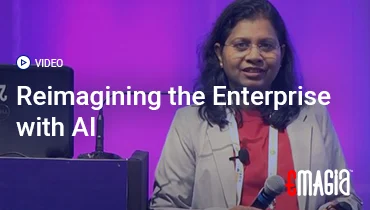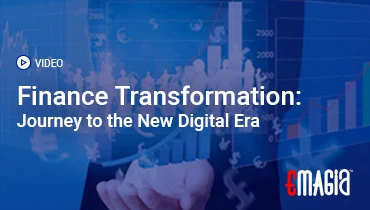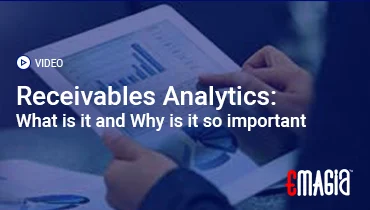In the vast landscape of business operations, information is the lifeblood. From invoices and contracts to purchase orders and remittance advices, companies are constantly inundated with documents, both digital and physical. Yet, much of the critical data contained within these documents remains trapped in unstructured formats, requiring tedious, manual data entry. This traditional approach is a significant drain on resources, prone to human error, and a major bottleneck for any organization striving for agility and real-time insights.
Imagine your finance team spending countless hours sifting through remittance slips, manually typing deduction codes from diverse customer formats into your ERP. Or your legal department painstakingly extracting clauses from contracts. This manual extraction of `parsing information` isn’t just inefficient; it’s a direct impediment to accurate decision-making and operational velocity. This is where a revolutionary technological solution comes into play: Automated Document Parsing.
So, what exactly is `document parsing`, and how does automation elevate it beyond simple data capture? What are the underlying technologies that make this possible, and what profound benefits can it unlock for your business? This comprehensive guide will delve deep into the world of intelligent `data parsing software`. We’ll explore its core definition, key features, real-world applications, and the transformative impact it has on streamlining workflows, enhancing accuracy, and converting unstructured data into actionable intelligence. Get ready to discover how to turn your document mountains into molehills of valuable, accessible data.
What is Automated Document Parsing? Extracting Intelligence from Unstructured Data
To truly grasp the power of this technology, let’s establish a clear definition of `document parsing` and how automation enhances this critical process.
Defining `Document Parsing`: Transforming Unstructured Data into Usable Information
`Document parsing` refers to the process of extracting specific, meaningful information from documents. This means taking raw, unstructured data (like text in a PDF, a scanned image, or even a handwritten note) and transforming it into a structured, organized format that can be easily understood, analyzed, and integrated into other systems (like databases, ERPs, or CRMs). It’s about teaching a computer to “read” and understand documents in a way that’s useful for business processes. When we talk about a `document parser`, we’re referring to the tool or system that performs this extraction.
The goal is to go beyond merely converting a document into a digital image. It’s about identifying and isolating key data points within that document, such as names, addresses, dates, amounts, product codes, or specific clauses.
The “Automated” Advantage: Beyond Manual Data Entry
The “automated” aspect is where the true revolution lies. Traditionally, `parsing information` from documents was a manual, labor-intensive process. Human operators would visually scan documents, identify relevant data fields, and then manually type that information into a system. This approach is slow, costly, and highly prone to errors, especially with high volumes.
Automated Document Parsing uses software, often powered by advanced technologies, to perform this extraction autonomously, with minimal or no human intervention. This capability is what differentiates a modern `docparser` from older, less sophisticated methods, offering `data parsing software` that operates intelligently.
Key Technologies Powering Automated Document Parsing: AI and OCR
Modern `parsing software` relies heavily on a combination of cutting-edge technologies:
- Optical Character Recognition (OCR): This is the foundational technology that converts images of text (from scanned documents or PDFs) into machine-readable text. Before any `document parsing` can occur, the system needs to “read” the characters on the page.
- Artificial Intelligence (AI) and Machine Learning (ML): This is where the “intelligence” comes in. AI/ML algorithms are trained on vast datasets of documents to understand context, identify patterns, and extract information even from varying layouts and formats. They can learn to identify specific data fields (e.g., “Invoice Number,” “Total Amount Due”) regardless of where they appear on the page or how they are phrased. This is crucial for truly intelligent `data parsing tools`.
- Natural Language Processing (NLP): A subset of AI, NLP enables the system to understand and interpret human language within documents, going beyond simple keyword matching to grasp the meaning and relationships between words, especially vital for `sentence parsing` in legal or contractual documents.
This powerful combination allows for `document parsing` that is both accurate and adaptable, enabling tools like `Docparser` to operate effectively across diverse document types.
Key Features of Advanced Automated Document Parsing Solutions
A comprehensive `document parsing software` offers a suite of functionalities that enables businesses to efficiently extract, process, and integrate data from virtually any document type.
A. Intelligent Data Extraction from Varied Formats and Layouts
- Universal Document Compatibility: The ability to process various document formats, including PDFs, scanned images (TIF, JPEG), emails, XML, and even `word parsing` from DOCX files.
- Template-Free Extraction (AI-driven): Advanced solutions use AI/ML to extract data from documents even without predefined templates, learning from document structures and semantic cues. This is a significant step up from older `document parser` tools.
- Zone-Based and Rule-Based Extraction: For more structured documents, the ability to define specific zones or rules (e.g., extract text next to “Invoice #”) for precise data capture.
B. Data Validation and Enrichment: Ensuring Accuracy
- Automated Validation: Cross-referencing extracted data against internal databases (e.g., customer master data, product catalogs) or predefined business rules to ensure accuracy and identify discrepancies.
- Data Standardization and Formatting: Automatically formatting extracted data to match internal system requirements (e.g., dates into a consistent format, currency conversion).
- Human-in-the-Loop Review: Providing a user-friendly interface for human operators to review, verify, and correct any uncertain extractions, allowing the AI to learn from these corrections and continuously improve.
C. Integration Capabilities: Seamless Data Flow
- API (Application Programming Interface) Connectivity: Offering a robust `document parse api` to seamlessly connect with existing Enterprise Resource Planning (ERP), Customer Relationship Management (CRM), accounting software, and other business systems.
- Direct Integrations: Pre-built connectors for popular business applications (e.g., Salesforce, QuickBooks, SAP).
- Export Options: Ability to export parsed data in various structured formats such as CSV, Excel, XML, JSON, or directly into databases.
D. Workflow Automation and Process Orchestration
- Automated Routing: Automatically directing documents and extracted data to the correct departments or workflows based on content (e.g., invoices to Accounts Payable, sales orders to fulfillment).
- Exception Handling: Flagging documents or data points that require manual review or intervention, ensuring no critical information is missed.
- Audit Trail: Maintaining a detailed log of all `parsing information` extracted, changes made, and workflow actions taken for compliance and audit purposes.
These sophisticated features enable organizations to fully leverage the power of `parsing tools` for transformative efficiency.
Transformative Benefits of Implementing Automated Document Parsing
The adoption of `Automated Document Parsing` solutions translates into a multitude of tangible benefits that directly impact a company’s bottom line, operational efficiency, and strategic capabilities.
1. Significant Time and Cost Savings: Eliminating Manual Labor
By automating the extraction of `parsing information`, businesses can drastically reduce the time and resources spent on manual data entry. This frees up employees from tedious, repetitive tasks, allowing them to focus on higher-value, strategic activities. The cost savings come from reduced labor, fewer errors requiring correction, and accelerated processing cycles. This is the core advantage of intelligent `parsing software`.
2. Enhanced Accuracy and Reduced Errors
Human error is an inevitable part of manual data entry. Automated systems, especially those powered by AI and ML, perform extraction with far greater precision and consistency. This leads to cleaner data, fewer discrepancies, and less time spent on error correction, improving overall data integrity across the organization. The `docparse` capabilities ensure data consistency.
3. Accelerated Processing and Faster Turnaround Times
Documents can be processed and data extracted in seconds or minutes, as opposed to hours or days manually. This accelerated processing leads to faster customer onboarding, quicker invoice processing, quicker cash application, and more rapid decision-making across various departments. Speed is a competitive advantage, and robust `data parsing tools` provide it.
4. Improved Data Accessibility and Actionable Insights
By converting unstructured document data into a structured, searchable format, Automated Document Parsing makes valuable information readily accessible for analysis. This leads to deeper insights into operations, customer behavior, and market trends, enabling data-driven strategic decisions. It transforms raw `parsing information` into actionable intelligence.
5. Enhanced Compliance and Audit Readiness
Automated `document parsing software` creates a comprehensive and immutable audit trail for every document and the data extracted from it. This simplifies compliance with regulatory requirements, streamlines internal and external audits, and reduces the risk of non-compliance penalties.
6. Better Customer and Vendor Relationships
Faster processing of invoices, orders, and inquiries leads to quicker responses and improved service delivery. This enhanced efficiency fosters stronger, more positive relationships with customers and vendors, as their interactions with your business become seamless and error-free.
Implementing Automated Document Parsing: A Strategic Roadmap
Adopting `Automated Document Parsing` is a strategic initiative that requires careful planning and execution to ensure maximum return on investment and smooth integration into existing workflows.
1. Assess Current Document Workflows and Identify Target Areas
Begin by mapping your existing document-intensive processes. Identify which documents (e.g., invoices, purchase orders, contracts, remittance advices) are causing the biggest bottlenecks due to manual `parsing information` extraction. Quantify the time, cost, and errors associated with these processes to build a clear business case for automation. This helps prioritize where `data parsing software` will have the most impact.
2. Define Clear Objectives and Success Metrics
Establish measurable goals for your Automated Document Parsing project. Examples include: reducing manual data entry time by X%, improving data accuracy by Y%, accelerating processing cycles by Z%, or achieving faster invoice-to-cash conversion. These objectives will guide your solution selection and implementation.
3. Data Readiness and Integration Strategy
Ensure your data is clean and consistent. Plan for robust, bi-directional integrations between your chosen `document parsing software` and your existing ERP, accounting, CRM, and other core business systems. A flexible `document parse api` is critical for seamless data flow and maximizing the value of the extracted data.
4. Vendor Selection and Solution Capabilities
The market for `parsing tools` and solutions is growing. When selecting a vendor, prioritize:
- AI/ML Maturity: How sophisticated are their algorithms in handling diverse and unstructured document types without predefined templates?
- Accuracy Rates: What are their demonstrated accuracy rates for relevant document types?
- Ease of Use: How intuitive is the platform for defining extraction rules and managing exceptions?
- Integration Capabilities: Robust APIs and pre-built connectors are essential.
- Scalability: Can the solution handle your current and future document volumes?
- Support and Expertise: Evaluate the vendor’s implementation support, training, and ongoing customer service.
5. Pilot Project and Phased Rollout
Consider starting with a pilot project involving a single document type or department to test the solution and gather internal feedback. A phased rollout minimizes disruption, allows for learning and refinement, and builds internal confidence before scaling to other areas. This iterative approach helps ensure successful adoption of the `document parser`.
6. Training, Change Management, and Continuous Optimization
Provide comprehensive training for all users on how to effectively use the new system, focusing on how their roles will evolve (e.g., from data entry to exception handling). Implement a strong change management strategy to communicate benefits and address concerns. Post-implementation, continuously monitor performance, gather user feedback, and use the system’s analytics to identify areas for further optimization and improvement.
Emagia: Revolutionizing Document Processing with AI-Powered Parsing
In the complex and data-intensive world of modern finance, the ability to efficiently extract and utilize critical information from a myriad of documents is paramount. Emagia’s AI-powered Order-to-Cash (O2C) platform is meticulously designed to transform your financial operations, including the crucial task of Automated Document Parsing, ensuring that no valuable `parsing information` remains trapped in unstructured formats.
Emagia centralizes and unifies all your critical Accounts Receivable documents – from incoming remittance advices and deduction claims to various customer communication formats. Our cutting-edge Artificial Intelligence and Machine Learning algorithms, powered by advanced Natural Language Processing (NLP) and Optical Character Recognition (OCR), intelligently analyze these diverse documents. This enables seamless, automated extraction of key data points, regardless of format or layout, effectively functioning as a highly sophisticated `document parser` tailored for financial operations. Imagine instantly extracting payee details, invoice numbers, deduction codes, and payment amounts from various remittance types, converting them into structured data ready for immediate processing.
By providing unparalleled `data parsing software` capabilities, Emagia significantly reduces the manual effort involved in cash application and deduction management. Our intelligent system automatically matches incoming payments to open invoices and categorizes deductions with high accuracy, drastically reducing unapplied cash and reconciliation time. This integration of `document parsing` with core AR functions ensures data integrity, accelerates cash flow, and provides your finance team with real-time, actionable insights into your receivables. By partnering with Emagia, you’re not just extracting data; you’re gaining an intelligent financial partner that transforms your document processes into a strategic advantage, ensuring maximum efficiency, accuracy, and profitability across your entire Order-to-Cash cycle.
Frequently Asked Questions (FAQs) About Automated Document Parsing
What is the core concept of `Automated Document Parsing`?
`Automated Document Parsing` involves using software, often powered by AI and Machine Learning, to automatically extract specific, meaningful information from unstructured documents (like PDFs, images, or emails) and transform it into a structured, usable format, eliminating manual data entry.
How does `document parsing` differ from simple OCR?
OCR (Optical Character Recognition) is the foundational technology that converts images of text into machine-readable text. `Document parsing` goes beyond this; it interprets the extracted text, identifies specific data fields within it, and extracts `parsing information` based on context and rules, effectively making sense of the content for business use.
What technologies enable intelligent `data parsing software`?
Intelligent `data parsing software` is typically enabled by a combination of technologies, including Optical Character Recognition (OCR) for text conversion, Artificial Intelligence (AI) and Machine Learning (ML) for pattern recognition and learning from diverse layouts, and Natural Language Processing (NLP) for understanding the context and meaning of text.
What are the main benefits of implementing `Automated Document Parsing`?
The main benefits include significant time and cost savings from reduced manual labor, enhanced data accuracy, accelerated processing times, improved data accessibility for insights, better compliance through robust audit trails, and stronger relationships with customers and vendors due to faster service.
Can `document parsing software` handle various document formats like PDFs, images, and emails?
Yes, advanced `document parsing software` is designed to handle a wide variety of document formats, including PDFs, scanned images (like TIFF or JPEG), email bodies and attachments, and often even word processing documents (`word parsing`). The goal is universal compatibility for data extraction.
How does a `document parse api` facilitate integration with other business systems?
A `document parse api` (Application Programming Interface) allows seamless, programmatic connectivity between the document parsing solution and other business systems like ERPs, CRMs, and accounting software. It enables automated data flow, pushing extracted `parsing information` directly into relevant systems without manual intervention, streamlining workflows.
Is `Automated Document Parsing` primarily for large enterprises, or can smaller businesses benefit?
`Automated Document Parsing` can benefit businesses of all sizes. While large enterprises with high document volumes see massive gains, even smaller businesses dealing with recurring invoices, contracts, or order forms can achieve significant efficiency improvements, cost savings, and enhanced accuracy by adopting a tailored `docparser` solution.
Conclusion: Unlocking Your Data’s Full Potential for Business Agility
As we’ve thoroughly explored, Automated Document Parsing is no longer a niche technology but a critical enabler for any organization seeking to thrive in the data-driven economy. It represents a fundamental shift from the laborious, error-prone manual extraction of `parsing information` to an intelligent, automated process that unlocks the hidden value within your documents.
By leveraging the power of AI, Machine Learning, and OCR, businesses can transform unstructured data into actionable intelligence, driving unprecedented levels of efficiency, accuracy, and operational agility. The benefits are clear: significant time and cost savings, accelerated workflows, enhanced compliance, and the ability to make more informed decisions based on comprehensive, real-time data.
Ultimately, investing in Automated Document Parsing is about more than just technology; it’s about building a future where your business can effortlessly capture, understand, and utilize every piece of valuable information, empowering you to respond faster to market changes, serve your customers better, and achieve sustainable growth.



